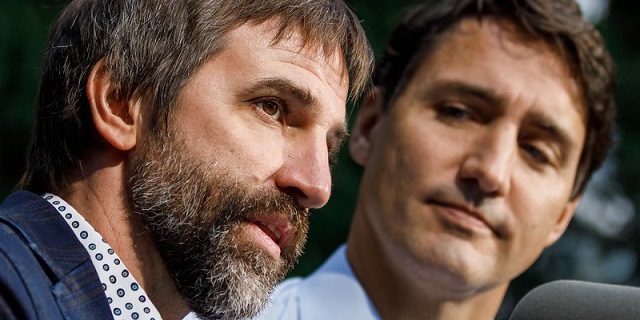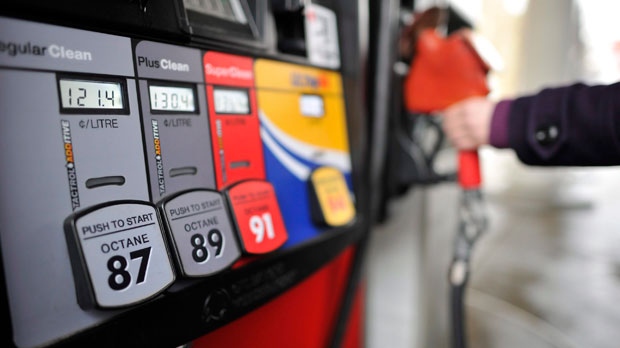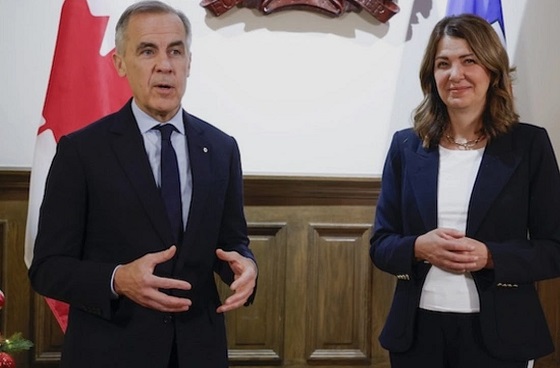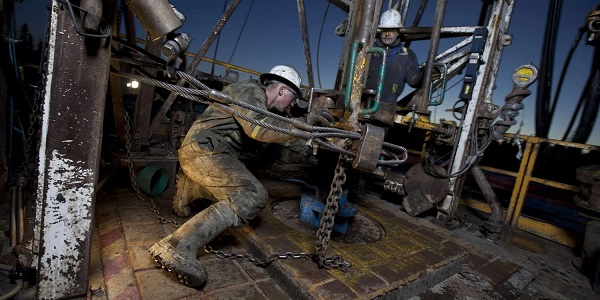Economy
Fixing the Trudeau – Guilbeault Policy Mess May Take Longer Than We’d Like – Here’s Why

From EnergyNow.ca
By Jim Warren
By spring 2024 it was pretty clear the Liberal government was headed for palliative care. A Leger poll on May 25 and an Abacus poll June 10 showed the Conservatives with a 20 point lead over the Liberals.
As the likelihood of their imminent defeat increased, the Trudeau Liberals stepped up the implementation of legislation and regulations inimical to the gas and petroleum industries. Their efforts in 2024 included legislation limiting freedom of speech for companies and individuals who publicize environmental progress in the oil and gas sector (aka Bill C-59). The speech-muzzling measure became law on June 21.
Around the same time, Environment and Climate Change Minister, Steven Guilbeault was busy shepherding two particularly ominous regulatory packages through to finalization. One set of regulations supported Canada’s Clean Electricity Regulations—intended to eliminate the use of coal and natural gas in the production of electricity with staged decommissioning deadlines between 2035 and 2050. The second package finalized the rules for the natural gas and oil industries emissions cap intended to restrict production and growth in those industries, to take effect in 2026.
The regulations weren’t finalized until the month before the House shut down for the holidays, just weeks before Justin Trudeau’s political career was put on life support.
The green policy stampede extended to the international stage. Never mind deficits and debt, the Liberals found plenty of cash to enhance their status as world class environmental luminaries.
At November’s COP29* conference at Baku, Azerbaijan, Guilbeault and Canada’s Ambassador for Climate Change (who knew we had one?), Catherine Stewart signed us on to 15 pledges to take action on fighting climate change. Around half of the promises were merely motherhood and apple pie statements, concessions to the environmentally woke who attend these sorts of international conferences.
But several of the commitments made on our behalf came with price tags. I’m still unclear on exactly which line item in a federal budget, legislative authority or policy statement authorized the spending.
Canada’s COP29 delegation launched the $2 billion GAIA project. Apparently we are cost sharing the project with Mitsubishi. The official government report on the conference doesn’t indicate how much of the $2 billion Canada is kicking in.
Canada also showcased its green bona fides by contributing to the effort to finance the green transition and climate change adaptation in poor countries—a task expected to require developed countries to collectively spend $110 billion to $300 billion per year by 2035. Our delegation announced Canada would lead by example, making a $1billion donation to the effort.
Guilbeault and Stewart gave $10 million to Conservation International’s “Limpopo Transfrontier Conservation Area” project. They “invested” another $2.5 million in the World Wildlife Fund’s “Building Resilient Communities through Marine Conservation in Madagascar” project.
Guilbeault may indeed be angling for that UN job I mentioned in my last EnergyNow column. Read it Here Canada made a $1.25 million payment directly to the office of UN Secretary General, António Guterres. The donation is supposed to assist Guterres in his efforts to encourage countries to get their “Nationally Determined Contributions” handed in on time.
In a podcast conversation with Jordan Peterson several months ago, Danielle Smith noted the accelerated pace of the Liberal government’s announcement and implementation of new environmental policies detrimental to Alberta’s oil and gas sectors and the economies of both Alberta and Canada.
Smith said one of the effects of enacting so many new environmental measures would be to make it extremely difficult for the next government to reverse them all in its first term. This probably was one of the reasons behind the rush to get so much done this past year.
Peterson added a psychological dimension to the discussion. He suggested Guilbeault and Trudeau were behaving like wounded narcissists. They were acting like egomaniacs who recognized their time in office was coming to an end and wanted to do as much as possible in the time they had left to pad their reputations as “do or die” climate warriors. They were striving to guarantee their legacies as planet-saving heroes.
They are probably both right. But Smith’s assessment speaks more directly to the practical challenges a new Conservative government will confront while trying to unwind the morass of legislation and regulations needlessly hampering the growth of environmentally responsible resource development in the west. It is an effort by the outgoing government to make their anti-oil legacy tamper proof.
Simply wading through the legislative quagmire and assessing where reform is most urgent and readily achievable will take time and effort. The wheels of parliament can turn slowly. No doubt some of the bureaucrats employed by the Liberals are true believers—frightened of the “impending climate apocalypse” and unlikely to expedite changes to environmental legislation and regulations. And, there could be multi-year contracts with consultants and other suppliers and long-term funding arrangements with companies and NGOs that will be difficult to unwind.
Let’s not forget the inevitable legal challenges that will threaten to hold up the reform process. Environmental groups and other special interests can be expected to use the courts to block efforts to reverse Liberal government policy. Ideally, the new government will cut off funding support for anti-oil environmental groups. Then at least supporters of the gas and petroleum sectors won’t be sued by activists funded with our tax dollars.
Then there are all the other important things governments are required to do and a limited amount of time to do them—drafting fiscally responsible budgets and dealing with the possibility of US tariffs on our exports come to mind as things near the top of the to-do list.
The highly anticipated Poilievre government may not be able to move as far and fast in reversing the Trudeau-Guilbeault legacy as we might like. They will face immense challenges and should be given a fair bit of slack if they can’t fix everything early in their first term.
*COP stands for Conference of the Parties to the United Nations Framework Convention on Climate Change (UNFCCC). The framework was adopted by the countries attending the UN sponsored Rio Earth Summit held at Rio de Janeiro, Brazil in 1992. The number in COP29 indicates it is the 29th annual post-Rio conference of the parties.
Business
US Energy Secretary says price of energy determined by politicians and policies


From the Daily Caller News Foundation
During the latest marathon cabinet meeting on Dec. 2, Energy Secretary Chris Wright made news when he told President Donald Trump that “The biggest determinant of the price of energy is politicians, political leaders, and polices — that’s what drives energy prices.”
He’s right about that, and it is why the back-and-forth struggle over federal energy and climate policy plays such a key role in America’s economy and society. Just 10 months into this second Trump presidency, the administration’s policies are already having a profound impact, both at home and abroad.
While the rapid expansion of AI datacenters over the past year is currently being blamed by many for driving up electric costs, power bills were skyrocketing long before that big tech boom began, driven in large part by the policies of the Obama and Biden administration designed to regulate and subsidize an energy transition into reality. As I’ve pointed out here in the past, driving up the costs of all forms of energy to encourage conservation is a central objective of the climate alarm-driven transition, and that part of the green agenda has been highly effective.
Dear Readers:
As a nonprofit, we are dependent on the generosity of our readers.
Please consider making a small donation of any amount here.
Thank you!
President Trump, Wright, and other key appointees like Interior Secretary Doug Burgum and EPA Administrator Lee Zeldin have moved aggressively throughout 2025 to repeal much of that onerous regulatory agenda. The GOP congressional majorities succeeded in phasing out Biden’s costly green energy subsidies as part of the One Big Beautiful Bill Act, which Trump signed into law on July 4. As the federal regulatory structure eases and subsidy costs diminish, it is reasonable to expect a gradual easing of electricity and other energy prices.
This year’s fading out of public fear over climate change and its attendant fright narrative spells bad news for the climate alarm movement. The resulting cracks in the green facade have manifested rapidly in recent weeks.
Climate-focused conflict groups that rely on public fears to drive donations have fallen on hard times. According to a report in the New York Times, the Sierra Club has lost 60 percent of the membership it reported in 2019 and the group’s management team has fallen into infighting over elements of the group’s agenda. Greenpeace is struggling just to stay afloat after losing a huge court judgment for defaming pipeline company Energy Transfer during its efforts to stop the building of the Dakota Access Pipeline.
350.org, an advocacy group founded by Bill McKibben, shut down its U.S. operations in November amid funding woes that had forced planned 25 percent budget cuts for 2025 and 2026. Employees at EDF voted to form their own union after the group went through several rounds of budget cuts and layoffs in recent months.
The fading of climate fears in turn caused the ESG management and investing fad to also fall out of favor, leading to a flood of companies backtracking on green investments and climate commitments. The Net Zero Banking Alliance disbanded after most of America’s big banks – Goldman Sachs, J.P. Morgan Chase, Citigroup, Wells Fargo and others – chose to drop out of its membership.
The EV industry is also struggling. As the Trump White House moves to repeal Biden-era auto mileage requirements, Ford Motor Company is preparing to shut down production of its vaunted F-150 Lightning electric pickup, and Stellantis cancelled plans to roll out a full-size EV truck of its own. Overall EV sales in the U.S. collapsed in October and November following the repeal of the $7,500 per car IRA subsidy effective Sept 30.
The administration’s policy actions have already ended any new leasing for costly and unneeded offshore wind projects in federal waters and have forced the suspension or abandonment of several projects that were already moving ahead. Capital has continued to flow into the solar industry, but even that industry’s ability to expand seems likely to fade once the federal subsidies are fully repealed at the end of 2027.
Truly, public policy matters where energy is concerned. It drives corporate strategies, capital investments, resource development and movement, and ultimately influences the cost of energy in all its forms and products. The speed at which Trump and his key appointees have driven this principle home since Jan. 20 has been truly stunning.
David Blackmon is an energy writer and consultant based in Texas. He spent 40 years in the oil and gas business, where he specialized in public policy and communications.
Bruce Dowbiggin
Integration Or Indignation: Whose Strategy Worked Best Against Trump?

““He knows nothing; and he thinks he knows everything. That points clearly to a political career.” George Bernard Shaw
In the days immediately following Donald Trump’s rude intervention into the 2025 Canadian federal election— suggesting Canada might best choose American statehood— two schools of thought emerged.
The first and most impactful school in the short term was the fainting-goat response of Canadian’s elites. Sensing an opening in which to erode Pierre Poilievre’s massive lead in the 2024 polls over Justin Trudeau, the Laurentian elite concocted Elbows Up, a self-pity response long on hurt feelings and short on addressing the issues Trump had cited in his trashing of the Canadian nation state.
In short order they fired Trudeau into oblivion, imported career banker Mark Carney as their new leader in a sham convention and convinced Canada’s Boomers that Trump had the tanks ready to go into Saskatchewan at a moment’s notice. The Elbows Up meme— citing Gordie Howe— clinched the group pout.

(In fact, Trump has said that America is the world’s greatest market, and if those who’ve used it for free in the past [Canada] want to keep special access they need to pay tariffs to the U.S. or drop protectionist charges on dairy and more against the U.S.)
The ruse worked out better than they could have ever imagined with Trump even saying he preferred to negotiate with Carney over Poilievre. In short order the Tories were shoved aside, the NDP kneecapped and the pet media anointed Carney the genius skewing Canada away from its largest trade partner to the Eurosphere. We remain in that bubble, although the fulsome promises of Carney’s first days are now coming due.
Which brings us to the second reaction. That was Alberta premier Danielle Smith bolting to Mar A Lago in the days following Trump’s comments. Her goal was to put pride aside and accept that a new world order was in play for Canada. She met with U.S. officials and, briefly, with Trump to remind them that Canada’s energy industry was integral to American prosperity and Canadian stability.
Needless to say, the fainting goats pitched a fit that not everyone was clutching pearls and rending garments in the wake of Trump’s dismissive assessment of his northern neighbours. Their solution to Trump was to join China in retaliatory tariffs— the only two nations to do so— and to boycott American products and travel. Like the ascetic monks they cut themselves off from real life. Trump has yet to get back to Carney the Magnificent

And Smith? She was a “traitor” or a “subversive” who should be keel hauled in the North Saskatchewan. For much of the intervening months she has been attacked at home in Alberta by the N-Deeps and in Ottawa by just about everyone on CBC, CTV, Global and the Globe & Mail. “How could she meet with the Cheeto?”
Nonetheless conservatives in the province moved toward a more independence within Canada. Smith articulated her demands for Alberta to prevent a referendum on whether to remain within Confederation. At the top of her list were pipelines and access to tidewater. Ergo, a no-go for BC’s squish premier David Eby who is the process of handing over his province to First Nations.
It became obvious that for all of Carney’s alleged diplomacy in Europe and Asia (is the man ever home?) he had a brewing disaster in the West with Alberta and Saskatchewan growing restless. In a striking move against the status quo, Nutrien announced it would ship its potash to tidewater via the U.S., thereby bypassing Vancouver’s strike-prone, outdated port and denying them billions.

Suddenly, Smith’s business approach began making eminent good sense if the goal is to keep Canada as one. So we saw last week’s “memorandum of understanding” between Alberta and Ottawa trading off carbon capture and carbon taxes for potential pipelines to tidewater on the B.C. coast. A little bit of something for everyone and a surrender on other things.
The most amazing feature of the Mark Carney/Danielle Smith MOU is that both politicians probably need the deal to fail. Carney can tell fossil-fuel enemy Quebec that he tried to reason with Smith, and Smith can say she tried to meet the federalists halfway. Failure suits their larger purposes. Which is for Carney to fold Canada into Euro climate insanity and Smith into a strong leverage against the pro-Canada petitioners in her province.
Soon enough, at the AFN Special Chiefs Assembly, FN Chief Cindy Woodhouse Nepinak told Carney that “Turtle Island” (the FN term for North America popularized by white hippy poet Gary Snyder) belongs to the FN people “from coast to coast to coast.” The pusillanimous Eby quickly piped up about tanker bans and the sanctity of B.C. waters etc.
Others pointed out the massive flaw in a plan to attract private interests to build a vital bitumen pipeline if the tankers it fills are not allowed to sail through the Dixon Entrance to get to Asia.
But then Eby got Nutrien’s message that his power-sharing with the indigenous might cause other provinces to bypass B.C. (imagine California telling Texas it can’t ship through its ports over moral objections to a product). He’s now saying he’s open to pipelines but not to lift the tanker ban along the coast. Whatever.
Meanwhile the kookaburras of isolation back east continue with virtue signalling on American booze— N.S. to sell off its remains stocks — while dreaming that Trump’s departure will lead to the good-old days of reliance on America’s generosity.
But Smith looks to be wining the race. B.C.’s population shrank 0.04 percent in the second quarter of 2025, the only jurisdiction in Canada to do so. Meanwhile, Alberta is heading toward five million people, with interprovincial migrants making up 21 percent of its growth.
But what did you expect from the Carney/ Eby Tantrum Tandem? They keep selling fear in place of GDP. As GBS observed, “You have learnt something. That always feels at first as if you have lost something.”
Bruce Dowbiggin @dowbboy is the editor of Not The Public Broadcaster A two-time winner of the Gemini Award as Canada’s top television sports broadcaster, his new book Deal With It: The Trades That Stunned The NHL And Changed hockey is now available on Amazon. Inexact Science: The Six Most Compelling Draft Years In NHL History, his previous book with his son Evan, was voted the seventh-best professional hockey book of all time by bookauthority.org . His 2004 book Money Players was voted sixth best on the same list, and is available via brucedowbigginbooks.ca.
-

 Alberta2 days ago
Alberta2 days agoAlberta Sports Hall of Fame Announces Class of 2026 Inductees
-

 Business1 day ago
Business1 day agoCanada’s climate agenda hit business hard but barely cut emissions
-

 MAiD2 days ago
MAiD2 days agoFrom Exception to Routine. Why Canada’s State-Assisted Suicide Regime Demands a Human-Rights Review
-

 Business23 hours ago
Business23 hours agoCarney’s Toronto cabinet meetings cost $530,000
-

 Business2 days ago
Business2 days agoIs Carney Falling Into The Same Fiscal Traps As Trudeau?
-

 Alberta2 days ago
Alberta2 days agoCarney’s pipeline deal hits a wall in B.C.
-

 Business2 days ago
Business2 days agoCarney government should privatize airports—then open airline industry to competition
-

 Bruce Dowbiggin23 hours ago
Bruce Dowbiggin23 hours agoIntegration Or Indignation: Whose Strategy Worked Best Against Trump?









